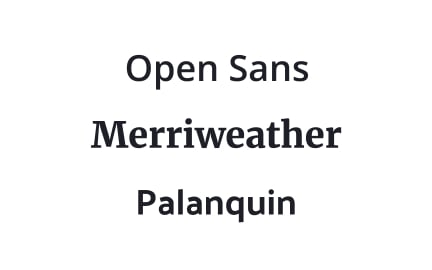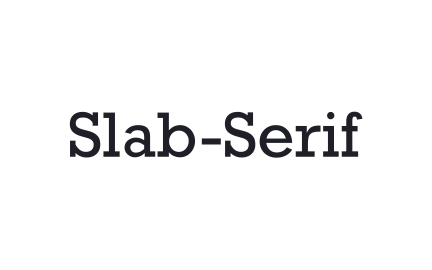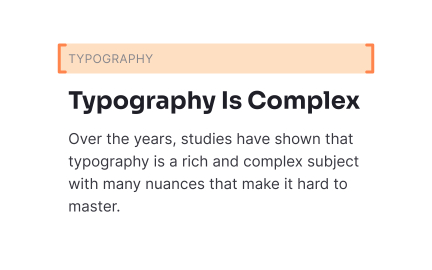Typography
Typography is the art and practice of arranging type, fonts, sizes, spacing, and hierarchy, to create clear, consistent, and visually engaging communication.

TL;DR
- Arrangement of type for readability and design.
- Includes fonts, spacing, and hierarchy.
- Shapes user experience and brand identity.
- Essential across digital and print products.
Definition
Typography is the discipline of arranging typefaces, sizes, spacing, and layout to optimize readability, structure, and aesthetics in both digital and physical communication.
Detailed Overview
Typography is at the heart of visual communication. It involves not only the choice of typefaces but also how they are arranged on a page or screen. This includes size, weight, spacing, alignment, and hierarchy. Good typography ensures text is legible, information is structured clearly, and the design feels cohesive.
A frequent question is how typography impacts user experience. Text is the primary way users consume information, so clarity and readability are critical. Poor typography creates friction, making content difficult to scan or understand. Well-executed typography guides the eye, emphasizes priority content, and supports accessibility for a wide range of users.
Another common query is how typography connects to brand identity. Typography communicates personality as much as logos and colors do. A serif typeface might suggest tradition and authority, while a sans-serif feels modern and approachable. Brands that maintain consistent typography across interfaces, marketing, and documentation build stronger recognition and trust.
Teams also ask about the technical aspects of typography. Concepts like kerning (spacing between characters), leading (line spacing), and tracking (overall letter spacing) influence both readability and aesthetic balance. Designers fine-tune these elements to improve the user’s reading experience across devices, from mobile screens to printed reports.
Accessibility is a recurring concern. Typography must meet minimum size requirements, use sufficient contrast, and avoid overly decorative fonts for body text. These practices ensure content is inclusive, supporting users with visual impairments or reading difficulties. Accessibility-focused typography prevents exclusion and improves comprehension.
Finally, typography evolves with technology. Variable fonts, responsive scaling, and dynamic layouts now allow text to adapt seamlessly across devices. This adaptability ensures typography remains functional and engaging in diverse digital contexts, while still rooted in principles that have guided print design for centuries.
Learn more about this in the Typography Style & Classification Lesson, a part of the Typography Course.
A typeface is the design of letterforms, and a font is a specific style and size within that typeface. Typography is the broader discipline of arranging these elements effectively.
It includes layout, spacing, and hierarchy beyond just font choice.
Typography influences readability and hierarchy, guiding how users consume information. Poor typography causes friction and confusion, while good typography improves clarity and flow.
It is one of the most important contributors to usability.
Key elements include kerning (spacing between characters), leading (line height), tracking (letter spacing), and hierarchy (size and weight differences).
These elements create rhythm and balance across text blocks.
Typography conveys personality and values. Consistent use across products, websites, and communications reinforces brand recognition and strengthens identity.
It is as influential as logos and colors in shaping brand perception.
Variable fonts and responsive scaling allow typography to adapt fluidly across devices. This flexibility ensures consistent readability while optimizing performance.
These innovations expand what typography can achieve while maintaining its core principles.
Recommended resources
Courses

Typography

Design Composition

HTML Foundations
Lessons
Assessments
Projects

Uxcel Pride Month Scholarship Program

Placid Plastic Typography System Challange




















